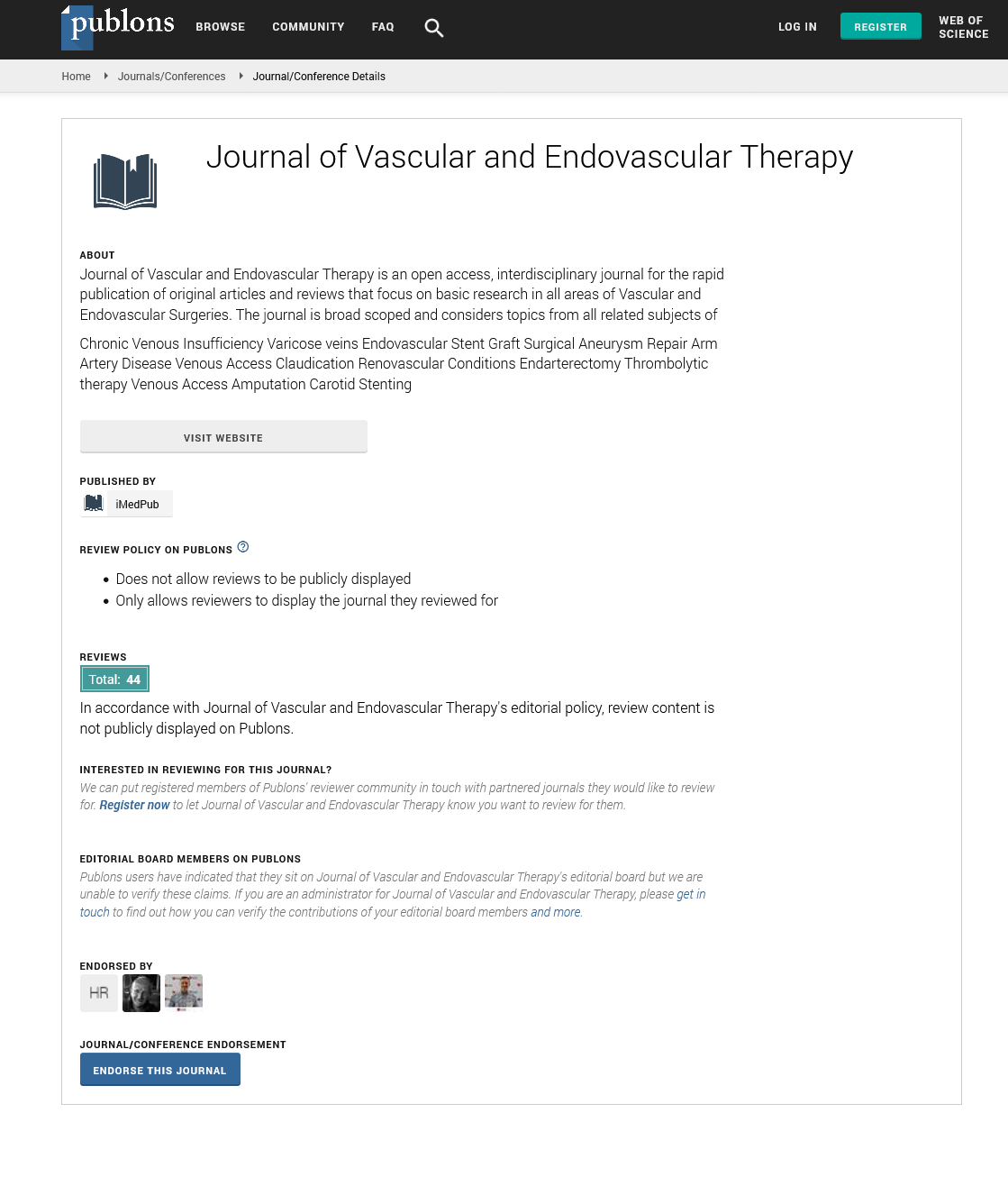Abstract
Decision Making Based on Clinicoanatomic Criteria to Select Open Versus Endovascular Repair for In nominate Artery Pseudoaneurysms Management
Background: The quality of present data on the effectiveness of endovascular repair (EVR) or open surgery (OS) to treat in nominate artery pseudoaneurysms (IAPs) is poor. The use of EV might simplify the procedure and provide a meaningful alternative for this condition, but it remains to be proved. We analyzed all IAP cases handled by OS or EVR from the literature to affect the decision-making for OS or EVR, basing the choice of intervention on clinicoanatomical data analysis.
Methods and results: All relevant literature reports of EVR and OS management of IAP were analyzed comparatively. Evidence-based data were extracted from the literature using Medline and Embase database resources. We totally recorded 73 cases, 50 from OS repair and 23 received EVR. Most patients who displayed hard signs or stable vital signs have been significantly managed by OS (94% vs. 57%) or EVR (43%vs. 8%) respectively. There was a significant predominance of iatrogenic injuries in the EVR group compared with those handled by OS (39%vs. 26%) except for patients who underwent endovascular stenting. OS was performed in the large majority of patients with severe blunt traumas (50%vs. 22%)(p=0.0328). Many patients classified as having cardiothoracic comorbidities benefited from EVR therapy (52%vs. 20%). Some cases in which arterial wounds were limited to the mid segment of the IA underwent EVR with significant proportion compared to the OS group (26%vs. 24%) (p=0.004). Patients in the EVR group had more operative failure and complications rates (39%) rather than those in the OS group (20%) (p< 0.05). Of the 23 patients managed by EVR, two had premature mortality (8.7%); of the remaining cases that received OS, the early mortality rate represented 6%. The significant causes for OS-related morbimortality were multiple organ failures, acute right heart insufficiency, pneumonia, deep vein thrombosis and hemorrhagic shock. Overall events for EVR-related death included stroke complications and massive hemorrhage from endoleak. The mid-term follow-up rate was significantly higher for the EVR group (57%) compared to the OS group (30%).
Conclusion: Compared with OS repair, EVR might represent an attractive alternative strategy for managing IAPs. The most primary option for OS included unstable patients, suffered from endovascular stenting, free of comorbidities and when the arterial wound is located at the distal portion of the IA.
Author(s):
Raherinantenaina F, Andrianandraina MCG, Avotsihoarana TH, Rabemanantsoa R, Mampiadana ML, RakotoRatsimba HN and Rajaonanahary TMA
Abstract | Full-Text | PDF
Share this

Google scholar citation report
Citations : 177
Journal of Vascular and Endovascular Therapy received 177 citations as per google scholar report
Journal of Vascular and Endovascular Therapy peer review process verified at publons
Abstracted/Indexed in
- Google Scholar
- Open J Gate
- Publons
- Geneva Foundation for Medical Education and Research
- Secret Search Engine Labs
Open Access Journals
- Aquaculture & Veterinary Science
- Chemistry & Chemical Sciences
- Clinical Sciences
- Engineering
- General Science
- Genetics & Molecular Biology
- Health Care & Nursing
- Immunology & Microbiology
- Materials Science
- Mathematics & Physics
- Medical Sciences
- Neurology & Psychiatry
- Oncology & Cancer Science
- Pharmaceutical Sciences


